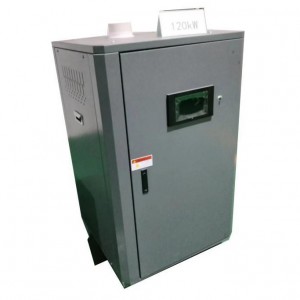- Afrikaans
- Albanian
- Amharic
- Arabic
- Armenian
- Azerbaijani
- Basque
- Belarusian
- Bengali
- Bosnian
- Bulgarian
- Catalan
- Cebuano
- China
- China (Taiwan)
- Corsican
- Croatian
- Czech
- Danish
- Dutch
- English
- Esperanto
- Estonian
- Finnish
- French
- Frisian
- Galician
- Georgian
- German
- Greek
- Gujarati
- Haitian Creole
- hausa
- hawaiian
- Hebrew
- Hindi
- Miao
- Hungarian
- Icelandic
- igbo
- Indonesian
- irish
- Italian
- Japanese
- Javanese
- Kannada
- kazakh
- Khmer
- Rwandese
- Korean
- Kurdish
- Kyrgyz
- Lao
- Latin
- Latvian
- Lithuanian
- Luxembourgish
- Macedonian
- Malgashi
- Malay
- Malayalam
- Maltese
- Maori
- Marathi
- Mongolian
- Myanmar
- Nepali
- Norwegian
- Norwegian
- Occitan
- Pashto
- Persian
- Polish
- Portuguese
- Punjabi
- Romanian
- Russian
- Samoan
- Scottish Gaelic
- Serbian
- Sesotho
- Shona
- Sindhi
- Sinhala
- Slovak
- Slovenian
- Somali
- Spanish
- Sundanese
- Swahili
- Swedish
- Tagalog
- Tajik
- Tamil
- Tatar
- Telugu
- Thai
- Turkish
- Turkmen
- Ukrainian
- Urdu
- Uighur
- Uzbek
- Vietnamese
- Welsh
- Bantu
- Yiddish
- Yoruba
- Zulu
Dec . 05, 2024 08:37 Back to list
sand casting manufacturing facilities and their production processes in the industry
The Role and Significance of Sand Casting Factories in Modern Manufacturing
In the realm of manufacturing, sand casting has established itself as a quintessential method for producing metal castings. The process is not only cost-effective but also versatile, making it a preferred choice for a wide range of industries. As we delve into the world of sand casting factories, we will explore their operational mechanics, historical significance, and their essential contributions to contemporary manufacturing.
Understanding Sand Casting
Sand casting is a process that involves creating a mold from a sand mixture, into which molten metal is poured to form a desired shape. The sand, typically mixed with a bonding agent, is packed around a pattern of the object to be created, allowing for a high degree of detail and complexity in the final product. Once the metal cools and solidifies, the mold is broken away, revealing the casting.
The advantages of sand casting are manifold. It can accommodate a variety of metals, including aluminum, iron, and bronze, making it suitable for diverse applications. Additionally, the process is capable of producing both small and large components, allowing for flexibility in production scales. This is particularly beneficial for industries that require bespoke components or low-volume runs.
The Role of Sand Casting Factories
Sand casting factories play a pivotal role in the broader manufacturing ecosystem. They serve various sectors, including automotive, aerospace, construction, and machinery. The components produced in these factories range from engine blocks and transmission cases to intricate parts used in machinery and construction equipment.
One of the standout features of sand casting factories is their ability to produce complex geometries that would be difficult or costly to achieve through other manufacturing methods, such as machining or forging. This capability not only reduces material waste but also shortens production time, ultimately leading to cost savings for both manufacturers and consumers.
sand castings factories

Technological Innovations
Over the years, sand casting factories have seen significant technological advancements. The integration of computer-aided design (CAD) and computer-aided manufacturing (CAM) has revolutionized how patterns and molds are created. Automation and robotics have improved both the efficiency and accuracy of the sand casting process, reducing human error and increasing output.
Moreover, advancements in materials science have led to the development of new binders and additives that enhance the quality of the sand molds. These innovations not only produce stronger and more precise castings but also contribute to environmentally friendly practices by minimizing emissions and reducing waste.
Environmental Considerations
As global awareness of environmental issues grows, sand casting factories are increasingly adopting sustainable practices. The use of reclaimed sand, which can be reused multiple times in the casting process, is becoming more prevalent. This not only conserves natural resources but also reduces the overall environmental footprint of the manufacturing process.
Additionally, many sand casting operations are implementing green technologies to control emissions and manage waste effectively. These initiatives reflect a growing commitment to sustainable manufacturing practices and emphasize the industry's adaptability to changing environmental regulations.
Conclusion
Sand casting factories are integral to modern manufacturing, offering a blend of efficiency, versatility, and technological advancement. Their ability to produce complex metal components for a multitude of industries underscores their significance in the global economy. As these factories continue to innovate and adapt to sustainable practices, they will undoubtedly remain a cornerstone of manufacturing processes well into the future. The ongoing evolution of sand casting technology not only enhances productivity but also aligns with the increasing demand for environmentally responsible manufacturing practices. As such, sand casting remains an artful blend of tradition and innovation, securing its place in the manufacturing landscape for years to come.
-
8mm Thin-Walled Cast Steel Manhole Cover Pallet Bottom Ring | Durable
NewsAug.04,2025
-
Premium Cast Iron Water Main Pipe: Durable, Corrosion-Resistant
NewsAug.03,2025
-
Durable Cast Iron Water Mains | AI-Optimized Systems
NewsAug.02,2025
-
High-Efficiency Propane Boiler for Baseboard Heat | Save Energy
NewsAug.01,2025
-
Premium Source Suppliers for Various Gray Iron Castings
NewsJul.31,2025
-
Durable Cast Iron Water Main Pipes | Long-Lasting
NewsJul.31,2025


